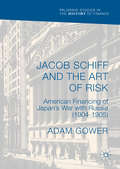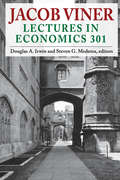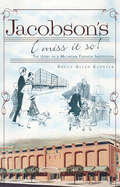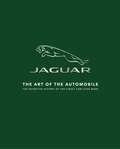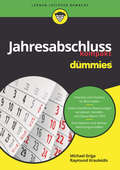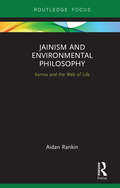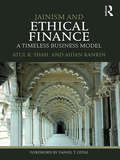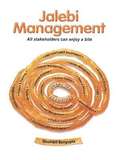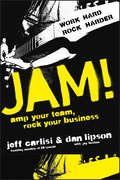- Table View
- List View
Jackson Automotive Systems
by Wei Wang William E. FruhanJackson Automotive Systems produces automotive parts for advanced heating and air conditioning systems, engine cooling systems, fuel injection and transfer systems, and various other engine parts, and it supplies them to the automotive industry primarily in Michigan. Like many OEM suppliers for the automotive industry, Jackson cut back production following the financial crisis in 2008. By 2013, the firm is back to operating at capacity. The company experiences a bottleneck in production of some key electronic components and, as a result, is unable to repay its outstanding debt to the bank. In addition, the firm delayed replacing equipment during the downturn and now must replace aging equipment to avoid future production delays. The president approaches the bank for an extension to repay a loan and for an additional loan to cover the new equipment purchase. Before meeting with the loan committee, the president must prepare a presentation on the firm's financial position.
Jackson State University: Introducing Business Concepts into Education--The Benefits of Time-Driven Activity-Based Costing
by Robert S. Kaplan Steven R. AndersonAs CEOs of universities and other nonprofits become more publicly accountable for their costs and performance, having a TDABC model of their resource demands provides them with a powerful tool for guiding expansion plans, determining service levels, and managing budgets. This chapter looks at Jackson State University and its application of TDABC in a nonprofit setting.
Jacob Schiff and the Art of Risk: American Financing of Japan's War with Russia (1904-1905) (Palgrave Studies in the History of Finance)
by Adam GowerJacob Henry Schiff (1847–1920), a German-born American Jewish banker, facilitated critical loans for Japan in the early twentieth century. Working on behalf of the firm of Kuhn, Loeb & Co., Schiff’s assertiveness in favour of Japan separated him from his fellow German Jewish financiers and the banking establishment generally. This book’s analysis differs from the consensus that Schiff funded Japan largely out of enmity towards Russia but rather sought to work with Japan for over thirty years. This was as much a factor in his actions surrounding the Russo-Japanese War (1904–1905) as his concern to thwart Russian antisemitism. Of interest to financial historians alongside Japanese historians and academics of both genres, this book provides a lively and thoroughly researched volume that precisely focuses on Schiff’s mastery of banking.
Jacob Viner: Lectures in Economics 301
by Douglas A. Irwin Steven G. MedemaThis book presents, for the first time, a detailed transcription of Jacob Viner's Economics 301 class as taught in 1930. These lecture notes provide insight into the legacy of Jacob Viner, whose seminal contributions to fields such as international economics and the history of economics are well known, but whose impact in sparking the revival of Marshallian microeconomics in the United States via his classroom teaching has been less appreciated.Generations of graduate students at the University of Chicago have taken Economics 301. The course has been taught by such luminaries as Milton Friedman and Gary Becker, and remains an introduction to the analytical tools of microeconomics and the distinctive Chicago way of thinking about the market system. This demanding and rigorous course first became famous in the 1930s when it was taught by Jacob Viner.When read in tandem with the Transaction editions of Milton Friedman's Price Theory, Frank Knight's The Economic Organization, and Gary Becker's Economic Theory, Viner's lectures provide the reader with important insights into the formative period of Chicago price theory. These recently discovered notes from Viner's class will be important for historians of economic thought and anyone interested in the origins of the Chicago School of Economics.
Jacobs Suchard: Reorganizing for 1992
by Robert G. Eccles Philip HollandJacobs Suchard, the Swiss-based coffee and chocolate producer, is preparing for the common market and EEC 1992. At the time of the case, the company is still organized toward independent, local country markets, and believes it must move toward a more global organization structure. The case covers actions taken to date and plans for the future.
Jacobson's, I Miss It So!: The Story of a Michigan Fashion Institution (Landmarks)
by Bruce Allen KopytekJoin department store historian Bruce Allen Kopytek in this history of Jacobson's, a beloved Michigan institution for over 100 years. Winner of the Michigan Notable Book Award for 2012.Reenter the marvelous stores and meet the personalities who transformed Jacobson's from its humble Reed City origins to a staple of sophistication throughout Michigan and into the rest of the country. The brainchild of a retail genius, this deluxe specialty store gave customers a peerless social, shopping and dining destination. Experience anew the refined beauty of its Williamsburg-style Grosse Pointe store, the chic designer world of its Birmingham ensemble, or the charm and allure of its original Florida branch in Sarasota, revealing the secrets which made Jake's the dazzling store it was, and why it remains so profoundly missed by anyone who entered through its solid wooden doors.
Jaguar plc--1984
by Timothy A. Luehrman William T. SchianoA vehicle for analyzing the exposure of operating cash flows to exchange rate changes. Considers the value of Jaguar plc at the time of its privatization and share offering in 1984. Jaguar is a major exporter from the United Kingdom and the United States is therefore exposed to changes in the dollar/sterling exchange rate. Students are asked to estimate the value of the company as a function of expected future exchange rates. Students may also be asked whether and how Jaguar's exposure should be hedged.
Jaguar plc--1989
by Timothy A. Luehrman Robert W. LightfootDescribes Jaguar's product market problems in 1989, and its attractiveness to GM and Ford as an acquisition target. Students are asked to evaluate the suitability of GM and Ford as business partners for Jaguar, and to determine how much each should be willing to pay to acquire part or all of Jaguar. They are also asked to formulate tactics for extracting the highest possible price from each bidder.
Jaguar: The Art of the Automobile
by Zef Enault Nicolas HeidetCreated in collaboration with Jaguar, this stunning book is the definitive story of its legendary cars. Jaguar: The Art of the Automobile is a journey through 100 years of beautiful cars - an essential companion for any fan and the perfect gift.With unprecedented access to material from the Jaguar archive, the book tells the story of the marque's cars through the years, from the earliest models and much-loved classics to the most recent machines. Features include: Entries on each of the greatest Jaguar models Stunning photography throughout - including never-before-seen images Detailed technical information The full story of the creation of the most legendary models Other treasures from the Jaguar archives With insightful, thoroughly-researched text, Jaguar: The Art of the Automobile is the ultimate history of an enduring icon, told through its greatest machines.
Jaguar: The Art of the Automobile
by Zef Enault Nicolas HeidetCreated in collaboration with Jaguar, this stunning book is the definitive story of its legendary cars.Jaguar: The Art of the Automobile is a journey through 100 years of beautiful cars - an essential companion for any fan and the perfect gift.With unprecedented access to material from the Jaguar archive, the book tells the story of the marque's cars through the years, from the earliest models and much-loved classics to the most recent machines. Features include: Entries on each of the greatest Jaguar models Stunning photography throughout - including never-before-seen images Detailed technical information The full story of the creation of the most legendary models Other treasures from the Jaguar archivesWith insightful, thoroughly-researched text, Jaguar: The Art of the Automobile is the ultimate history of an enduring icon, told through its greatest machines.
Jahrbuch für Handlungs- und Entscheidungstheorie
by Marc Debus Eric Linhart Bernhard KittelHandlungs- und Entscheidungstheorien gelten als erfolgversprechende Ansätze zur Erklärung sozialen Handelns. Handeln wird dabei als das Ergebnis eines Prozesses gesehen, bei dem Akteure aus verschiedenen verfügbaren Handlungsalternativen diejenige auswählen, die bei gegebenen Rahmenbedingungen und erwarteten Handlungen anderer Akteure ihre Ziele am besten zu verwirklichen verspricht. Band 10 des Jahrbuchs vereint innovative Beiträge zur Handlungs- und Entscheidungstheorie, die sich mit der gesamten Breite des Feldes befassen. Die Themen reichen von Arbeiten, die Reaktionen in unterschiedlichen marktwirtschaftlichen Systemen auf die Finanzkrise analysieren, über Aufsätze, die aus spieltheoretischer Sicht Probleme bei der Etablierung des Sozialstaats in lateinamerikanischen Ländern aufzeigen, bis hin zu Beiträgen, die sich mit der Reaktion von Wählern auf Koalitionssignale befassen. Auch methodisch decken die Beiträge des vorliegenden Bandes eine große Bandbreite ab. So werden wichtige Konzepte kollektiven Entscheidens sowohl theoretisch verfeinert als auch experimentell oder mit Hilfe von Simulationen überprüft.
Jahrbuch für Handlungs- und Entscheidungstheorie: Band 12 (Jahrbuch für Handlungs- und Entscheidungstheorie)
by Marc Debus Markus Tepe Jan SauermannHandlungs- und Entscheidungstheorien gelten als erfolgversprechende Ansätze zur Erklärung sozialen und politischen Handelns. Handeln wird dabei als das Ergebnis eines Prozesses gesehen, bei dem Akteure aus verschiedenen verfügbaren Handlungsalternativen diejenige auswählen, die bei gegebenen Rahmenbedingungen und erwarteten Handlungen anderer Akteure ihre Ziele am besten zu verwirklichen verspricht. Band 12 des Jahrbuchs vereint innovative Beiträge zur Handlungs- und Entscheidungstheorie, die sich mit der gesamten Breite des Feldes befassen.
Jahresabschluss kompakt für Dummies (Für Dummies)
by Michael Griga Raymund KrauleidisUm den Jahresabschluss kommt keiner herum. Für all jene, die sich kompakt und leicht verständlich über Bilanzen informieren wollen, ist dies genau das richtige Buch. Zunächst erklären die Autoren den Unterschied zwischen internem und externem Rechnungswesen, damit Sie das Thema Jahresabschluss einordnen können. Und dann geht es ans Eingemachte: Sie erfahren, wie eine Bilanz aufgebaut ist, welche Gewinnermittlungsarten es gibt und welche unterschiedlichen Bewertungsvorschrift befolgt werden müssen. Und zu guter Letzt erläutern die Autoren, was es mit einem Konzernabschluss und dem Geschäftsbericht samt Anhang und Lagebericht auf sich hat.
Jahresabschluss, Kostenrechnung und Finanzierung im Krankenhaus: Grundlagen und Zusammenhänge verstehen
by Gerald SchmolaDer Jahresabschluss, die Kostenrechnung sowie die Finanzierung im Krankenhaussektor sind für Nicht-Ökonomen oftmals sehr komplex und kaum zu durchschauen. Insbesondere leitende Ärzte und Pflegekräfte, Betriebs- und Personalräte oder aber auch Quereinsteiger im Krankenhausbereich finden kaum kompakte und verständliche Darstellungen der Zahlenwelt eines Krankenhauses. Das vorliegende Buch schließt diese Lücke: Es gibt eine allgemeine Einführung in die Themenfelder und geht zudem auf die Besonderheiten des Jahresabschlusses, der Kostenrechnung sowie der Finanzierung von Kliniken ein. Der Leser kann sich durch Selbst-Studium die wichtigsten Grundlagen zur Finanzierung im Krankenhaus aneignen, sodass eine fachliche Diskussion mit Betriebswirten in Gesundheitseinrichtungen möglich wird. Das Werk richtet sich auch an Bachelorstudierende mit Bezug zum Gesundheitswesen sowie an Teilnehmer von MBA-Programmen für Nicht-Betriebswirte.
Jai Vakeel Foundation: Addressing Disability
by V. Kasturi Rangan Kairavi DeyJai Vakeel, a nonprofit organization in India, serves individuals with Intellectual Disability (IQ below 70). The organization was founded by the parents of a child with Down Syndrome, and they (and their next generation) steadily built the organization over 60 years to the become the largest such organization in India. Yet the organization served only some 1000 children annually when there were millions more needing the healthcare, education and skills to lead a decent life with ID. This case describes the evolution of the organization from the founder's family (six decades) to the first CEO from outside. As Archana Chandra appointed in 2013 brings about several changes to the organization she wonders how to scale the organization from the current 1,000 people it serves annually to at least 10,000 and then to the many millions who are in need.
Jailbirds: Lessons from a Women's Prison
by Mim Skinner'I've never read a book like Jailbirds before - which shows quite how much we need it. It is very funny and very important and reminds us that women in jail are still women worth listening to. I'm only grateful - for them, and for us -that Mim was listening.' PANDORA SYKES'Mim's warmth and understanding make for a humane, sometimes humorous, and always perceptive account of prison life. This book is a fine achievement.' KEN LOACHDarkly funny, heartbreakingly poignant and stark in its revelations about the UK's attitude towards people on the fringes of society and women in general, JAILBIRDS is this year's book you need to read.***"Did you know . . . . . . that 48 per cent of the women in prison have committed an offence in order to support the drug use of someone else?. . . that 46 per cent of women in prison report having attempted suicide once in their lifetime?. . . or that over half of the women in prison have been victims of more serious crimes than the ones they've been convicted of?But this isn't a book about statistics. It's a book about the individual stories of women caught up in our creaking and under-resourced prison system. Women who commit crimes in order get a roof over their head, who star in prison pantomimes and who deal drugs with Apprentice-style entrepreneurship. It's about those who won their battles with addiction or mental health, and those that didn't. About those who will never come back to prison, and those for whom it's the only safe space they've ever known.Headlines and news reports of prison leave us with a boiled-down narrative of goodies and baddies - violent offenders, neglectful mothers and incurable psychopaths if you read one paper, or cruel officers, the evil establishment and sexist judges if you read another. But, very rarely, just humans. When I started working in prisons, part of me expected to find this pantomime cast of characters. Instead I met wonderful, funny, brave and resilient people with complicated stories - on both sides of the bars. Come inside with me and meet them."
Jain Irrigation Systems Limited: Continuing a Legacy
by Gunnar Trumbull Forest L. Reinhardt Mahima Rao-KachrooFounded in 1963 by Bhavarlal Jain (Bhau), who believed in "providing solutions for every problem," Jain Irrigation in 2018 had a global footprint and $1.1 billion in revenue. Bhau had insisted that his business add value to farmers' lives and promote sustainable agricultural practices, and that social mission remained at the heart of the organization. Jain's business was now run by Bhau's four sons and included five main business units: micro-irrigation (MI) systems, industrial-use pipes, tissue culture research and development, food processing and solar energy products. As a new, third generation began to move into company management, the Jain family considered how to sustain growth, profitability, and also their commitment to farmer livelihoods.
Jainism and Environmental Philosophy: Karma and the Web of Life (Routledge Focus on Environment and Sustainability)
by Aidan RankinEnvironmental policy agendas, activism and academic research into ecological questions are all predominantly derived from the philosophical perspectives of the West. At national and global levels, environmental policy-makers tend to work according to Western-based methodologies. At the same time, emergent or developing economies are profoundly affected by the issues they address, including air pollution, rapid urban expansion, habitat loss and climate change. If environmental awareness, and the policies that stem from it, are to have a lasting global impact, it is important that non-Western voices are heard in their own right, and not merely as adjuncts of Western-led agendas. Jain thought is a useful case study of a system of values in which environmental protection and the idea of a ‘web of life’ are central, but which has evolved in India independently of Western environmentalism. This book describes and explains Jain environmental philosophy, placing it in its cultural and historical context while comparing and contrasting with more familiar or ‘mainstream’ forms of ecological thought. It will also show how this thought translates into practice, with an emphasis on the role of environmental concerns within the business and commercial practices of Jain communities. Finally, the book examines the extent to which Jain ideas about environmental protection and interconnectedness have universal relevance. This book will be of great interest to students and scholars of environmental ethics, sustainable business and economics, environmental policy, and Jainism.
Jainism and Ethical Finance: A Timeless Business Model
by Atul K. Shah Aidan RankinThe financial crisis of 2008 has led to a re-evaluation of the role of financial institutions and their relationship with the wider economy and society. This process has meant an increased questioning of both the conduct of business itself and the principles behind commercial and financial activities. Yet non-western voices have been notably absent from this debate, as have alternatives to the dominant western-derived economic ideologies. From the ancient spiritual wisdom or Dharma of the Jains, there emerges a practical modern philosophy fully in tune with the re-emergence of India as a global economic power. Jain individuals, businesses and charities have played a powerful role in India’s rise and within the global Indian Diaspora. Jain communities are noted everywhere for their contributions to business, the professions and science. These successes are based on the principles of interdependence and co-operation, with an emphasis on long-term consolidation rather than short-term bursts of growth. Researchers and students interested in the ethics of finance, accounting and economics will find Jainism and Ethical Finance a scholarly and illuminating evaluation of Jain Dharma as a non-western case study. In the light of current concerns about the way global finance and banking systems operate, this book offers a timely alternative perspective. .
Jaipur Literature Festival - Beyond the Festival Template
by Tarun Khanna Dennis Yao Hillary Greene Amrita ChowdhuryJaipur Literature Festival (JLF), dubbed "the greatest literary show on earth" was an annual event held in late January at the Diggi Palace in Jaipur. JLF provided a platform for international authors and Indian language authors from the subcontinent to engage in a literary dialogue. By 2011, JLF attracted the largest festival audience in the Asian Pacific region with approximately 60,000 visitors from 24 countries. It featured 224 speakers in 140 sessions, and 100 musicians in 20 concerts. Success had already changed the character of the festival from the earlier more intimate days and had created a momentum that, if not managed correctly, could compromise goals such as the democratic ethos of the festival. While JLF had achieved explosive growth and critical success, its expenses still exceeded its revenue. Could JLF find an organizational and financial "template" which could sutain the festival into the future?
Jalebi Management
by Shombit SenguptaAn important addition to the literature of management as a discipline, this pioneering book gives importance to the social dynamics of business organizations. An outcome of the author`s practical experience of over three decades in the global market, this book ably demonstrates the importance of paying attention to human culture, lifestyle and trends, while conducting business. Marked by original thought, concepts, processes and graphics, it demonstrates that business organizations of today must be sensitive to the nuances of global social culture so as to bring about quantum growth. In particular, it establishes that there is no barrier between industry and society.
Jam! Amp Your Team, Rock Your Business
by Dan Lipson Jeff CarlisiPraise for JAM!"Breaking into the music business is difficult at best; sustaining success even more so. Jeff Carlisi is both a musician and a businessman, and he and Dan Lipson have penned an entertaining and extremely useful book. Read JAM!, and you should be blowing your competition off the stage in no time." -Terry Stewart, president and CEO, Rock and Roll Hall of Fame and Museum"Jeff Carlisi's story is worth a book all by itself. But combine it with Dan Lipson's sound and practical business advice, and you've got a combination that's indispensable for any executive looking to make some noise of their own. Highly recommended."-Dave Sutton, founder and managing partner, TopRight Strategic Marketing, and coauthor, Enterprise Marketing Management"We've all dreamed of standing on stage before a packed house of screaming fans. Jeff Carlisi has done it, and he and Dan Lipson have built a business dedicated to giving that experience to kids and executives alike. The two of them have crafted a business advice book unlike any other, one that will help you find your own spotlight."-Gary Byrd, president and CEO, Pratt Financial Services"Bands that make great music do so with lots of practice, a keen sense of vision, creativity, and the ability within the group to listen and play parts. The same holds true in great organizations. Jeff and Dan understand this, and do a great job of communicating the magic that occurs when individuals within an organization tune up, tune in, and listen to each other playing their directed parts."-LARRY THOMAS, chairman emeritus, Guitar Center Inc."In the entertainment world, there's almost always a difference between the persona that you see and the real persona. Not with Jeff. He's the same guy on and off stage, and he's had his eyes wide open his whole career. He and Dan offer the kind of practical business advice that anyone can use. You'll learn a lot from Jeff's story."-John W. Mecom, Jr., former owner of the New Orleans Saints
Jamaica's Anemic Growth: The IMF, China and the Debt(th) Trap
by Natalie Kindred Rafael Di TellaThis case describes the economic development problems faced by the small Caribbean-island country of Jamaica over most of the past half-century. The Jamaican economy showed relatively strong growth in the 1960s but stagnated in the 1970s. By the end of that decade, Jamaica was forced to turn to the International Monetary Fund (IMF) for balance-of-payments support. Over the 1980s and early 1990s, the unpopular policy conditions associated with IMF loan programs made the Fund a lightning rod for criticism over Jamaica's lack of economic progress. Jamaicans celebrated the end of IMF borrowing in the mid-1990s, but a severe financial crisis later that decade created a new layer of economic problems. In 2010, in the context of the global economic downturn, Jamaica once again returned to the IMF for financing support. This case allows students to explore the complicated economic difficulties faced by Jamaica, which remains burdened by a self-reinforcing set of interrelated factors, including high public debt, a sluggish private sector, an inefficient public sector, poverty, and crime, among others.

